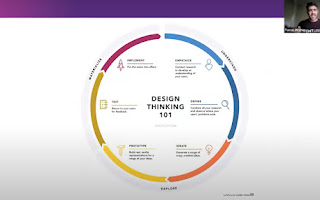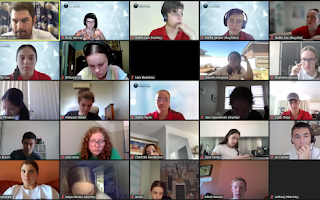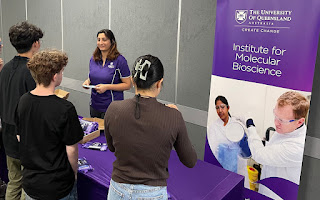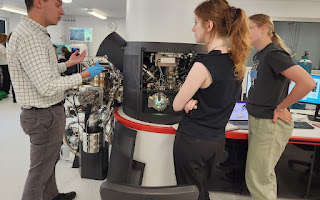National Youth Science Forum (NYSF) – Anita Thivakon Yr 12
As a quick intro, the National Youth Science Forum is a not-for-profit organisation which aims to encourage Australian high school students to pursue their passions in STEM (science, technology, engineering and maths). Rotary has been the founding partner of the NYSF and conducts the participant selection interviews, helps run online and in person events and endorses students to attend. If you end up at NYSF you’ll find out heaps more about the wonderful people at Rotary and what they do. The flagship program of NYSF is their Year 12 program which I attended. This brings like-minded students from around the country together to connect and get a feel of real world STEM opportunities and pathways.
This year I joined a cohort of 451 Yr 12s. Since 1984, over 15 000 students have completed the program.
The first week of NYSF was held entirely online, using Zoom. Since Covid NYSF has decided to keep an online component because it allows us to see things we couldn’t otherwise see in person. We packed a lot into these 4 days so I’ve picked some highlights to share.
In Science@Home, we calculated the energy output of the sun which is not as crazy as it sounds. We used an insulated cup, water, ice, a thermometer and some thermodynamics and calorimetry which I think you learn if you do chemistry or physics in year 11. The Design Thinking Workshop taught us about some considerations involved when translating innovation into products.
In the same week we had a Careers Day with presentations from NYSF sponsors like Lockheed-Martin, the CSIRO and Australian Space Agency. Pictured are some speakers from Quantum Brilliance, a quantum computing startup, and Organon, a healthcare company specialising in women’s health. Our first keynote speaker was Scientia Professor Veena Sahajwalla. Professor Sahajwalla is a passionate inventor, materials scientist and 2022 NSW Australian of the Year who is known for recycling and green manufacturing. We also had a live cross to the CERN large hadron collider in Switzerland, where we got to speak to 3 particle physicists 100m underground with the ATLAS experiment. They were so cool, they even followed up to answer our question about whether they’d ever fallen down the stairs. Additionally, we had the opportunity to attend an interactive workshop with journalists from COSMOS Magazine to get a taste of a career in science communication.
The second week of NYSF was 4 days of optional in person visits at one of the STEM hubs spread around Australia’s major cities, and then one day back online. I was lucky enough to attend the in-person visits held in Brisbane.
We spent most of our time at the University of Queensland, UQ, at their riverside St Lucia campus. We heard some presentations from researchers who are developing first aid products using proteins found in snake venom to help clot blood. We also had a tour of the laboratories, I got to talk to scientists researching koala genetics, new battery technologies, nanoparticle drug delivery, and using bacteria to produce jet fuels and milk.
Also, at UQ I visited the Centre for Microscopy and Microanalysis. We got to talk to experts and see and participate in demonstrations of instruments using small angle x-ray scattering, x-ray powder diffraction, x-ray fluorescence microscopy, electron microscopy and photoelectron spectroscopy. All of those are words which make you sound smart. In our visit to the Institute for Molecular Bioscience, where we heard about the research of a PhD student in plant molecular farming, and the future potential of being able to grow vaccines for people in plants.
At Griffith University I attended a chemistry workshop. We used a spectrophotometer to analyse the effectiveness of sunscreens and work out which Powerade they’d poisoned. I also attended a lecture from an environmental scientist and a biofuels workshop. We also had social events organised for us which included a spaghetti bridge building competition and a scavenger hunt around the University which included a dance battle and an acapella Katy Perry cover.
The final two days of the program were held back online and again packed with events.
Some of these included a presentation from one of Tesla’s senior chemical engineers who talked to us about electrical vehicles and batteries, we also had a thought provoking and thoroughly entertaining session with our second keynote speaker, Dr Karl Kruszelnicki. Dr Karl is a science communicator who has done just about everything- he’s been a taxi driver, a paediatrician, walked across Spain and researched belly button lint.
I had a really great time at NYSF. It’s expanded my view of career opportunities, shown me what’s out there in the STEM industry and inspired me to pursue my interests and be open to new possibilities. I’ve also met so many incredibly talented, smart, kind and passionate people who will probably be lifelong connections. For Year 11 in particular, if you have any interest in STEM I strongly encourage you to look into applying, come find me if you have any questions. I’d like to also thank Inverell East Rotary Club for sponsoring me to attend, it’s amazing that we get so much support especially in regional areas like Inverell. Also, a massive shoutout to Ms J Clendinning, Miss A Rawson and the science staff for helping me along the way.
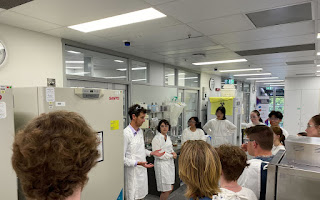
Inside the labs of researchers at the Australian Institute for Bioengineering and Nanotechnology. Here we heard from research group leaders and students working on furthering our understanding of the koala genome.
Our livecross over Zoom to the Large Hadron Collider, 100m underground at CERN in Switzerland, where we had our questions answered by three particle physicists.
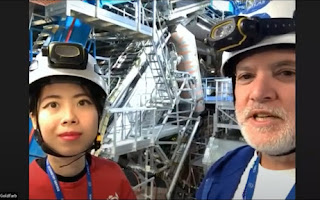
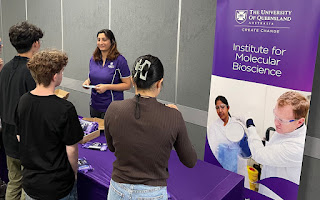
Our presentation from the Institute for Molecular Bioscience at the University of Queensland, where we heard fascinating things about biotechnology and plant molecular farming. We were given paper foldscope microscope kits to take home
A group photo taken from a biofuels workshop at Griffith University during our in-person sessions. Here we learnt about a biogas project underway at the university and how it could be used to sustainably fuel homes and vehicles around the world.





